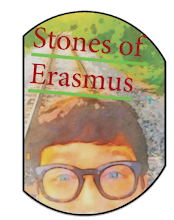I used to think teaching looked like a scene out of the novel-made-classic movie — the musical version I like is Goodbye, Mr. Chips, with Peter O’Toole in the title role. Mr. Chips is dapper. He nibbles biscuits, dispenses quiet wisdom through action, and his students adore him. That was my gestalt of teaching, a script I absorbed in childhood. I idolized my teachers — middle school, high school, even college — as if they could make order out of chaos (or show me the pattern inside the chaos, which is sometimes even better).
I became a teacher at twenty-eight, after a decade in the arms of Mother Church — first a seminarian, then a religious brother. I left that life for a parallel calling. And I’m still here, now in my forties, a little more tired, a little more rushed. The backstage parts of the job take up a lot of oxygen — grading, uploading this file and that one, posting grades, reading emails, responding to some of them. It’s office work except teaching isn’t an office job — it’s a command performance. The show thrills me; it also wrings me out.
This morning I cried in the shower. It was cold. My commute from Queens to my school in Washington Heights is about an hour and a half. I don’t love that part. I check my email and skim the news on my phone, but mostly it feels like time I can’t get back.
I started this year with gusto. Classic me — the Energizer Bunny. I’m either all-systems-go or in a deep morass of my own patheticness. People tend to like me when I’m bouncy and ready to wrangle sixth- and seventh-graders — the tribe I travel with these days. Teaching happens in the moment, but it demands a plan — lesson arcs, pacing calendars, data cycles. And yet my favorite moments are the improvised ones: a student’s random share, a series of unfortunate (and comic) events, that flash when a question sparks real curiosity. That’s the stuff that keeps me in it — kids doing, being, thinking, and seeing.
It’s my first time teaching in a public school after years in private — tuition-free places and tuition-paid ones. I got my certification after I’d already been in classrooms for a while. The shift to the public sphere is a whole story on its own. What I can say is: my students talk. They interrupt. They test boundaries. We’re nearing Christmas, and the behaviors have a pulse. That tracks. I should feel blessed — three more weeks and then hibernation. But I feel anxious.
Part of it is last year, which was a disaster. Let’s leave it there. Part of it is now: I’m learning two curricula, juggling four classes, and directing drama club (we meet once a week, which should be manageable, right?). I have a parent advocating hard for her seventh-grade son to get into a private school for eighth — which I respect — while I try to keep everyone learning today. I’m teaching everything new, following a set curriculum that still requires a million tweaks to fit the real humans in front of me. It drives me a little mad.
So I write. My therapist says writing is therapy; this is that. I’m not a naturally organized person. I survive on intuition. Sometimes I collapse under the pressure. I took a sick day today — I needed to breathe — and now I’m second-guessing the choice. My armor plate has shifted. I don’t feel as confident as I “should.” I’m not kind to myself; I can be brutal. When I stumble, the echo chamber inside me amplifies the mistake.
I’m not a perfectionist — far from it. I’m the teacher typing the slide deck minutes before students walk in. But like Mr. Chips, I believe in the humanity of this work. I’m teaching actual human beings — kids with desires and wishes, different from mine, but real. In the story, Mr. Chips falls in love. I always thought Goodbye, Mr. Chips felt a little queer-coded. There are plenty of us — gay men who found a home in the profession. When people ask (and they ask a lot), I sometimes joke that I’m saving myself for Mr. Right. I’ll even make up a beau — Marc Antony — no relation to the historical figure. He’s also been A.G. Millington or Uncle Faroger. It’s a little neurodivergent of me, maybe, to chat with my alter egos. It’s only a problem if they talk back, right?
My salve is Friday after school. New York City does something to me on Fridays — a little joie de vivre. I’ll walk along 37th Avenue in Queens, duck into a bodega, or browse a 99-cent store. I’ll treat myself to a café au lait (no sugar!) and remember that joy still sneaks in, even when I’m running on fumes.
Here’s what I know from my own mistakes: teaching isn’t osmosis. Papers don’t grade themselves. Lessons don’t float from the ether. But learning can be wondrous. I’ve built Stones of Erasmus from that conviction — it started “just for fun,” and in the pandemic it became a haven for the kinds of lessons I crave: resources that bring arts and letters to life, that challenge me and my students to go deeper. On my best days, I design the kind of work that makes adolescents sit up — not because it’s flashy, but because it’s alive with big ideas.
I’m still not Mr. Chips — I don’t want to be. He’s a sweet fantasy, a tidy narrative where the biscuits are always warm and the Latin epigrams always land. My classroom is messier, louder, more human. And when it’s all too much — when the commute freezes me, when the schedule crowds in, when the curriculum needs more tweaking than time allows — I remember why I came: to spark wonder, to foster thinking, to help kids map the disorder and sometimes find the hidden order inside it.
So, goodbye to the fantasy — and hello to the practice. I’ll keep showing up, tweaking, failing, trying again, and laughing at my own slide-deck-at-the-bell chaos. And on the days I manage to create a little stillness amid the storm — a circle of tea, a shared poem, a question that lingers — I nod to that dapper gentleman in my imagination and whisper, with gratitude and a grin: Goodbye, Mr. Chips.
PDF Copy for Printing


.png)














.png)
.png)
.png)
